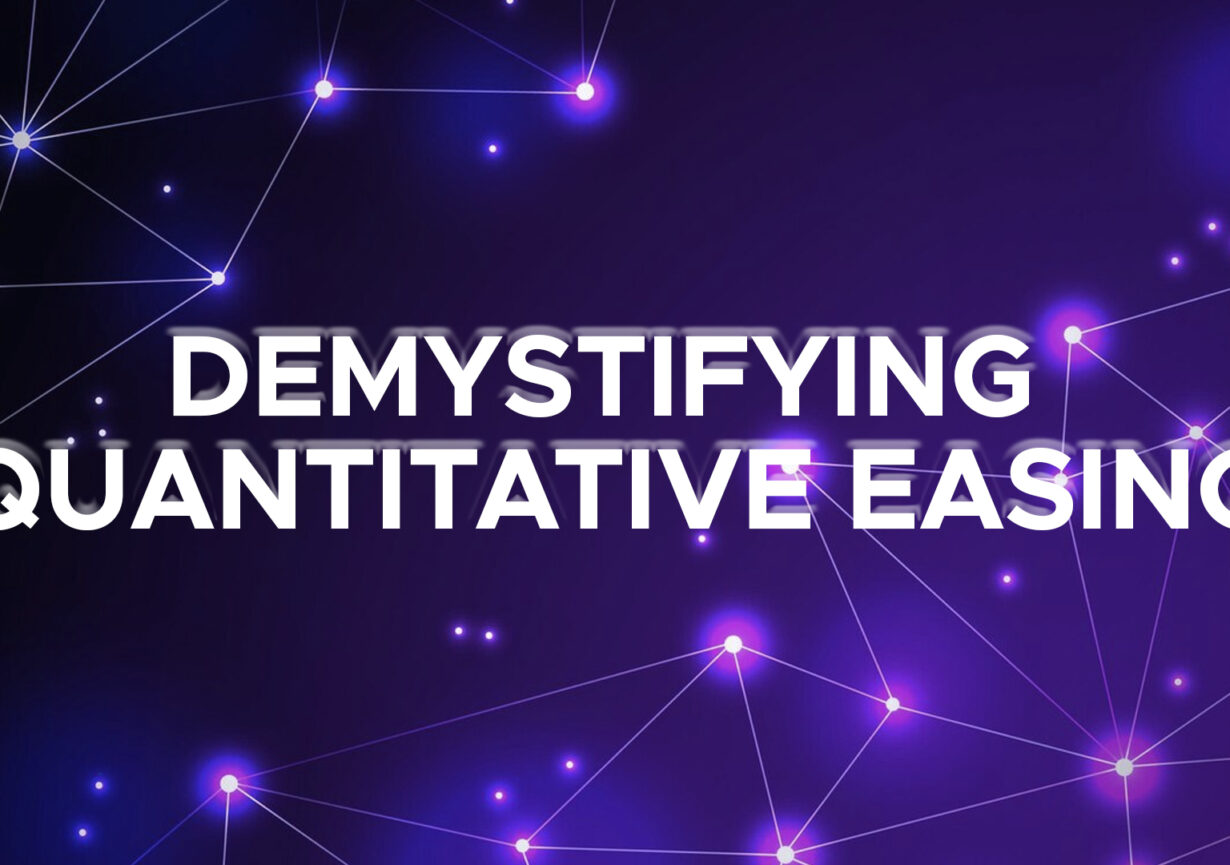- Quantitative Easing is a key financial coverage device used by important banks globally.
- Employed all through economic turbulence to produce booms and manage crises
- QE targets to boost cash delivery, impact inflation, and stabilize economies.
At its center, quantitative easing is a financial policy tool used by principal banks to grow the money delivered within an economy. This is usually completed when extra traditional measures, along with reducing interest rates, have been established as ineffective in producing financial growth or preventing deflation.
QE is frequently taken into consideration as an unconventional tool because it involves significant banks creating new cash to buy monetary property, frequently government bonds, and once in a while different securities like loan-subsidized securities (MBS).
The Mechanics of Quantitative Easing
- Asset Purchases: The principal financial institution starts quantitative easing with the aid of saying its purpose is to buy a selected quantity of financial assets, usually government bonds, from the open marketplace. These asset purchases are performed through commercial banks, number-one dealers, or other monetary institutions.
- Money Creation: To pay for that property, the critical financial institution creates new money electronically. This system is frequently called printing money, even though in the latest digital age, it is approximately electronically increasing the reserves maintained by banks.
- Boosting Reserves: When a valuable financial institution buys bonds, it credits the promoting bank’s reserve debts with the purchase amount. These increased reserves provide banks with additional liquidity, which they can use to increase loans and lending in the broader financial system.
Objectives of Quantitative Easing
Quantitative easing serves multiple primary targets:
- Stimulating Economic Growth: One of the principal dreams of QE is to stimulate financial recreation by reducing long-term recreation costs. Lower interest fees inspire borrowing and spending by both consumers and groups, which can result in extended investments, consumption, and normal financial growth.
- Fighting Deflation: In times of deflation, in which fees are reduced, QE can help fight the downward spiral by injecting money into the financial system. This encourages spending, prevents consumers from postponing purchases in anticipation of lower charges, and facilitates stabilizing prices.
- Supporting Financial Markets: QE also aims to stabilize economic markets through times of crisis. By buying economic assets, crucial banks can offer liquidity to the market, keep confidence, and save you from the crumble of the economic device.
Potential Implications of Quantitative Easing
While quantitative easing may be an effective tool for managing financial challenges, it additionally increases important concerns and their consequences:
- Inflation Concerns: One of the primary concerns associated with QE is its capability to grow inflation. When valuable banks infiltrate large amounts of money into the economy, there is a chance that it can result in wasteful inflation if not managed well.
- Income Inequality: QE can heighten earnings inequality. It tends to gain asset holders, inclusive of those with substantial investments in shares and real estate, even as potentially leaving low-earnings individuals with limited access to the benefits of a monetary boom.
- Market Dependency: Dependence on QE can create marketplace reliance, where monetary markets become reliant on critical bank interventions. This can make it difficult for crucial banks to exit their QE programs without imposing disruptions.
Conclusion
Quantitative easing is a powerful financial policy tool that relevant banks employ to guide financial challenges, promote growth, and control economic crises. While it has been effective in reaching those goals, it is no longer without its complexities and abilities. Understanding how QE works is critical for policymakers, economists, and everybody interested in the complex international monetary coverage. As economies continue to conform, quantitative easing will remain a key tool in the arsenal of critical banks around the world.


Leave a Reply